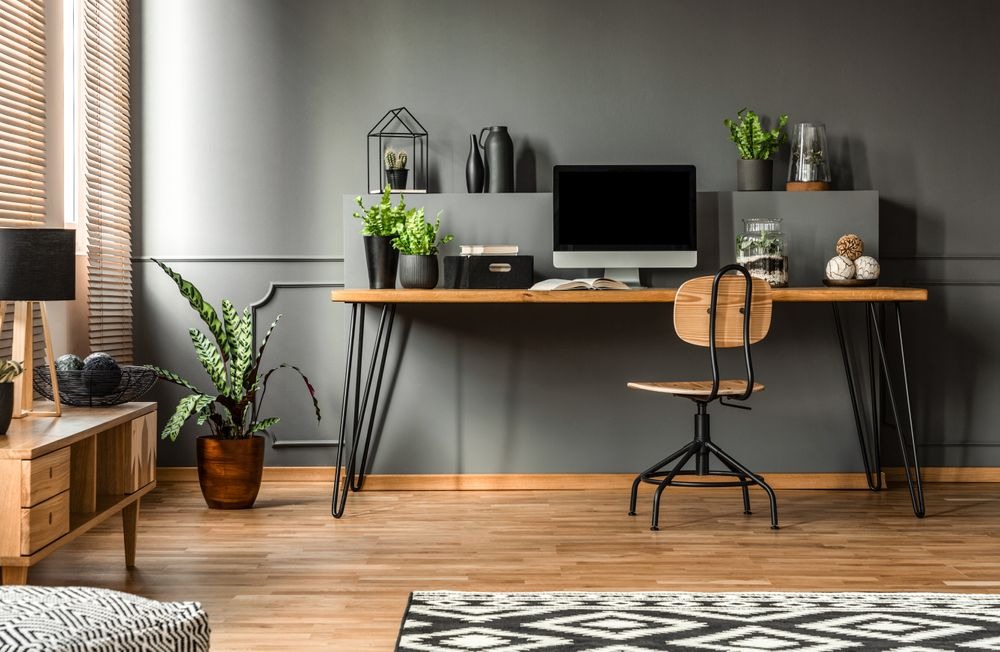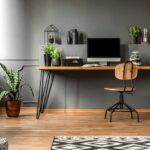The rise of remote work has redefined how we approach our workspaces. No longer confined to cubicles or open-plan corporate offices, many professionals are now choosing to work from home. But this shift demands more than just a laptop on the kitchen table. A thoughtfully designed home office isn’t just about comfort—it’s about creating an environment that fosters focus, productivity, and professionalism. Whether you’re a freelancer, a corporate employee working remotely, or a small business owner, the way you design your home office can significantly impact your efficiency and mental clarity.
Creating a professional-looking home office involves more than adding a desk and a chair to a spare room. Every element, from lighting to layout, contributes to the tone and functionality of the space. By curating your home office with intention, you’ll find it easier to stay organized, maintain discipline, and separate your work life from your home life.
Choosing the Right Space
The first step in designing a professional home office is selecting the right area of your home. Ideally, this space should be quiet, well-lit, and away from distractions. A spare bedroom, a loft, or even a converted attic can serve this purpose well. The goal is to create a space that mentally and physically separates your work from the rest of your household activities.
Natural light plays a vital role in productivity and well-being. Whenever possible, set up your workspace near a window to take advantage of daylight. If natural light is limited, consider investing in high-quality task lighting and overhead fixtures that mimic daylight. This not only enhances your concentration but also reduces eye strain, especially during long hours.
The Importance of Functional Layout
A professional workspace demands a functional layout. Think about how you move throughout your day. Do you need easy access to files, a place for video calls, or a clean backdrop for presentations? Your home office layout should support these activities. Avoid cluttering the area with unnecessary furniture or decor that could create visual noise and distract you from your tasks.
Your desk should be positioned so you can face the door or a window without placing your back to either. This positioning can improve your sense of control over your environment, which in turn enhances concentration. If space allows, add a small seating area for reading or brainstorming. This encourages movement during the day and provides a refreshing change of pace without leaving the room.
Selecting Office Furniture
The furniture you choose plays a critical role in both the appearance and usability of your home office. Start with a desk that fits your workflow—whether that’s a minimalist table or an executive-style desk with built-in storage. Your chair should be ergonomic, offering support for long hours of sitting without sacrificing style.
If you’re based in Pakistan and looking for high-quality pieces, sourcing office furniture Karachi vendors can be a smart move. Many local retailers now offer collections that combine modern aesthetics with practical features, allowing you to create a workspace that feels both stylish and efficient. Don’t shy away from mixing traditional wood finishes with sleek metal or glass elements to balance professionalism with personality.
Storage is another essential component. Filing cabinets, shelves, and organizational units help keep documents, supplies, and tech accessories neatly arranged and easily accessible. Keeping the space tidy not only looks professional but also helps you stay focused and organized throughout the workday.
Technology and Cable Management
A professional home office requires reliable technology. Your computer, printer, scanner, and other devices should be easily accessible but not intrusive. A tangle of cables can instantly make even the most beautifully designed space look chaotic. Use cord organizers, cable boxes, and under-desk trays to keep things tidy and out of sight.
It’s also wise to invest in a strong internet connection, especially if you’re frequently on video calls or uploading large files. Complement this with noise-canceling headphones and a good-quality webcam. These elements help ensure that you appear as professional on screen as you are in your environment.
Power outlets should be within easy reach, preferably built into or near your desk. Consider adding a surge protector to safeguard your electronics. All these subtle additions contribute to a workspace that not only looks professional but functions seamlessly.
Personal Touches Without Clutter
While professionalism is key, your home office should also reflect your personal taste. The right touches can make the space feel inviting without being distracting. Choose artwork that inspires you, whether it’s abstract pieces, motivational quotes, or calming nature scenes. Indoor plants can also breathe life into the space, improve air quality, and add a touch of greenery.
However, moderation is essential. Too many personal items can make your workspace feel cluttered and informal. Stick to a color palette that reflects your desired mood—neutral tones for calm and focus, or bold accents for creativity and energy. A few well-chosen accessories like a ceramic pen holder, a designer clock, or a leather desk pad can elevate the look instantly.
Framed credentials, certificates, or professional awards can subtly reinforce your professional identity. They also add depth to video call backdrops, making your presence feel more credible and polished to colleagues and clients.
Lighting for Mood and Focus
Lighting affects not just your productivity but also the mood of your home office. Harsh overhead lights can create glare, while insufficient lighting leads to eye strain. Layer your lighting for best results. Start with a strong ambient light source, then add a desk lamp for focused tasks, and finally, consider accent lighting to highlight artwork or architectural details.
Warm white bulbs typically create a welcoming environment, while cooler tones mimic daylight and are ideal for task-focused areas. Smart bulbs allow you to adjust brightness and color temperature throughout the day, helping you stay aligned with your natural circadian rhythm.
Avoid relying solely on screen brightness to light your workspace. Not only does this strain your eyes, but it also detracts from the professional atmosphere you’re trying to build. Proper lighting instantly enhances the overall aesthetic and practicality of your setup.
Sound Control and Acoustics
Another often overlooked aspect of home office design is sound. Noisy distractions from the rest of the home—or even street noise—can ruin your focus and create unprofessional moments during calls. Soundproofing materials, heavy curtains, rugs, and upholstered furniture can absorb unwanted noise and improve acoustics.
If you’re in an echo-prone space like a converted garage or basement, consider adding acoustic panels or even bookshelf-lined walls to dampen sound. A Bluetooth speaker or a white noise machine can also mask ambient noise and help you concentrate better.
For those who frequently participate in video conferences, using a high-quality external microphone and positioning it correctly can improve the audio quality of your calls dramatically. These details, while small, contribute to the polished professionalism of your work-from-home setup.
Maintenance and Daily Upkeep
Designing a professional home office is not just a one-time effort—it’s an ongoing commitment. Regular cleaning, organization, and small updates ensure the space remains functional and inspiring. Each day, take a few minutes to clear your desk, power down unused devices, and prepare for the next day. Weekly, take stock of supplies, clean surfaces, and reassess whether your layout or furniture still serves your needs.
Over time, your workflow may evolve, and your space should adapt accordingly. Stay open to minor changes—repositioning your desk, upgrading your chair, or changing your lighting can have a surprisingly big impact. Treat your home office as a living space, one that evolves with your career and lifestyle.
Final Thoughts
A professional home office is more than just a convenience—it’s a reflection of your values, your discipline, and your commitment to your work. When designed thoughtfully, it supports both your productivity and your well-being. From the layout to the furniture, from the lighting to the personal accents, every decision you make should move you closer to creating a space that inspires and motivates.
By investing in the right tools and design elements, and perhaps even sourcing quality office furniture Karachi businesses have to offer, you can build a workspace that feels just as polished and purposeful as any corporate office. In a world where remote work is becoming the norm, your home office is your new headquarters—make sure it speaks for you.






